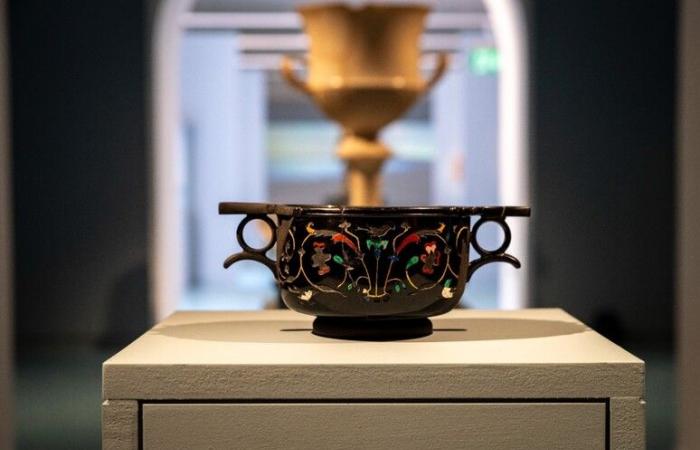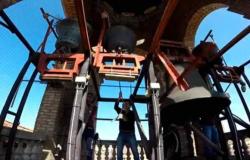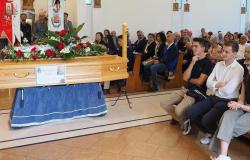After a long stay in the National Archaeological Museum of Naples (MANN), an extraordinary gem of antiquity returns to its original homeland. It is the Obsidian Cup, one of the three very rare finds dating back to 1954, discovered for the occasion in Villa San Marco, during the excavations directed by the great Libero D’Orsi.
The extraordinary chalice, exquisitely set with gold threads and adorned with refined inlays of malachite, yellow jasper, lapis lazuli and white and pink coral, will finally find its rightful place inside the museum that bears the name of its discoverer. The Libero D’Orsi Museum, in fact, in the suggestive Reggia di Quisisana in Castellammare di Stabia, is preparing to show the public one of the most precious pieces of its heritage.
This happy event is made possible thanks to the enhancement agreement signed in 2023 between the Archaeological Park of Pompeii and the National Museum of Naples. The aim is to promote a territorial network of sites and places of culture of inestimable value, making the Archaeological Museum of Stabia a true center of attraction.
In this regard, Gabriel Zuchtriegel, the director of the Archaeological Park, stressed the importance of intense future planning. Public transport connections, urban decor and signage are just some of the key points on the agenda of the meeting planned with the newly elected mayor of Castellammare, Luigi Vicinanza.
The administration’s plans, in fact, include welcoming visitors to the villas of Stabia and implementing important restoration and accessibility works, confirming the ambition to make the city a reference point in the valorization of the regional archaeological heritage.
But the obsidian cup will not be the only novelty. The Mann also brings the famous portrait bust of a Julio-Claudian princess, attributed to Claudia Octavia, daughter of Claudius and first wife of Nero. A discovery of the highest artistic and historical value, discovered in the lararium of Anteros, the small peristyle kept in the museum.
Next to the bust, the inscription of Anteros and Heracleus will also be exhibited, a further testimony to the greatness and fascination of ancient Roman civilization.
In conclusion, the city of Castellammare di Stabia as well as its illustrious history, come back to life thanks to these exceptional findings. A cultural heritage that is enriched, an invitation to discovery that is renewed, a story that continues to tell itself through the most valuable and significant finds.






